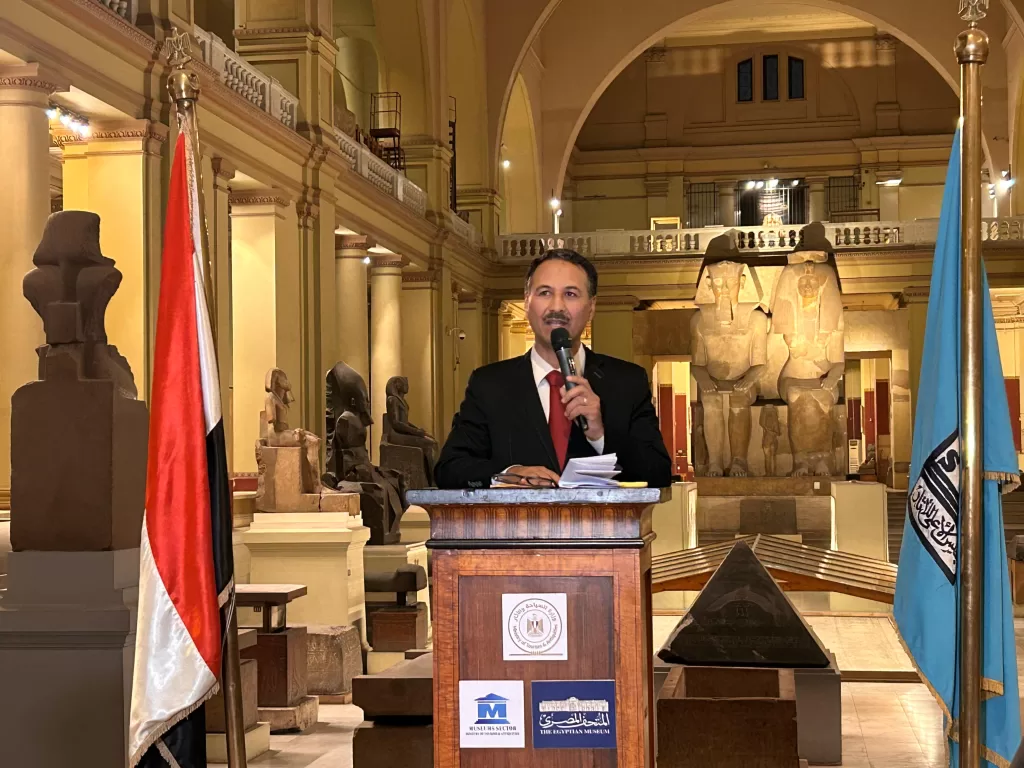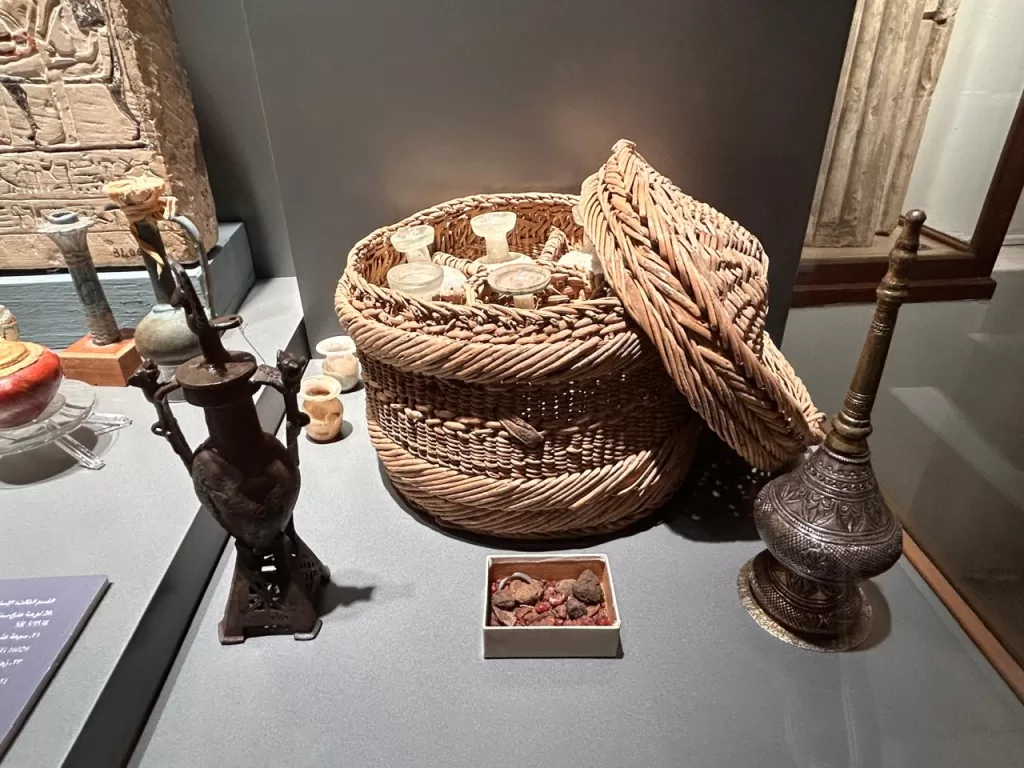In ancient Egypt, where the soft murmurs of the Nile conveyed tales across the ages, the exquisite craft of perfumery thrived as an essential aspect of daily life.
From the sacred rituals in Pharaonic temples to the quiet moments within Coptic monasteries, Egyptian perfumery, not only enhanced physical beauty, but also forged spiritual connections with the divine.
The evocative journey through time is splendidly captured in the temporary exhibition “Perfumes of Ancient Egypt through the Ages” at the Egyptian Museum in Cairo.
The exhibition is organised jointly by the Supreme Council of Antiquities and the French University of Montpellier Paul-Valéry.
It brings together 80 artefacts from various historical eras — Pharaonic, Greco-Roman, Coptic, and Islamic — each echoing the persistent Egyptian influence in the realm of fragrances.
Ali Abdel Halim, director of the Egyptian Museum, describes how the exhibition meticulously explores themes, such as raw materials, preparation techniques, and the diverse uses of perfumes for adornment, healing, and sacred rituals.

“Perfumes served as bridges of communication throughout history,” he said, underlining the economic and cultural significance these scents possessed in interlinking civilisations.
A standout feature of the exhibition is a captivating collection of rare reliefs from Hatshepsut’s temple at Deir el-Bahari.
These vibrant images, infrequently displayed, illustrate a commercial expedition to the legendary Land of Punt.
Through these elaborate carvings, Queen Hatshepsut recounts the remarkable tale of her crew returning with riches, including prized incense trees intended to scent the air of Thebes.
This captivating exhibit offers visitors a valuable insight into ancient maritime commerce, transporting them to a time when the exotic treasures of Punt were as sought after as gold.
In a harmonious blend of vivacity and scholarship, the exhibition is accompanied by an insightful 23-page book curated by experts and Egyptologists.
This olfactory adventure through Egypt’s storied past, spanning more than 3,000 years, delves into the terminology associated with perfumes, their applications, and their sanctified roles.
One notable feature of this book is the reconstruction of the ancient Kyphi recipe, a sacred concoction crafted meticulously by priests with divine fervour.
Frédéric Servajean, the exhibition’s scientific curator and professor of Egyptology, reflects on how the allure of Egyptian perfumes continues to inspire modern fragrance maestros.

“Un Jardin sur le Nil, Parfum Égyptien, and other modern scents owe their conceptual origins to Egypt’s lush aromatic heritage,” Servajean said.
Despite their romanticised allure, he added, these scents were primarily carriers of spiritual and medicinal virtues, their aesthetic allure being significantly secondary.
Diving deeper into the past, the exhibition traverses diverse timelines, alluding to periods when Egyptian expertise in perfumery was celebrated and documented by classical authors.
The Greco-Roman era saw an intricate tapestry of cultural exchanges, whereby ancient texts penned by Arab scholars translated the knowledge of Egyptian aromas, and Coptic academics preserved ancient plant names.
This melding of cultures is a testament to perfumes being timeless envoys that translated and transcended borders.
Hanane Gaber, a scientific curator and research engineer, said the exhibition is organised into six distinct sections: Geography of Aromatics; Raw Materials and Perfumers; Secular Uses of Perfumes, Cosmetics, and Pharmacopoeia; Literature, Economy, and Politics; Religious and Funerary Uses of Perfumes; and Contemporary Research on Perfumes in Egypt from Antiquity to the Present, including the integration of Virtual Reality.

She explained that in ancient Egypt, gardens featuring ponds adorned both temples and private residences, where sycamores thrived alongside a variety of trees, such as fruit trees, date palms, doum palms, fig trees, pomegranates, carob trees, moringas, and vines.
Among the cultivated flowers, lotus, papyrus, poppy, cornflower, and mandrake were commonly used in floral arrangements and garlands, she said.
At the exhibition, visitors can step into a ground-breaking virtual reality experience that plunges them into the realm of ancient Egyptian perfumes.
There, guests can navigate through three immersive scenes that highlight pivotal aspects of daily, religious, and funerary life.


Beyond the visual spectacle, the exhibition features an innovative olfactory element, developed specifically for this event, enhancing the sensory journey.
In the first scene, visitors find themselves in an embalming workshop where juniper is prominently featured as one of the aromatic plants used in the mummification process.
The second scene offers insight into the perfume oil production process, spotlighting the coveted lotus oil.
The final scene reveals a ceremonial offering of Kyphi to Osiris within a majestic Egyptian temple.
Running until February 28, 2025, the exhibition is held in Room No. 44 on the museum’s ground floor, offering an exploration of scents that shaped history.











Discussion about this post